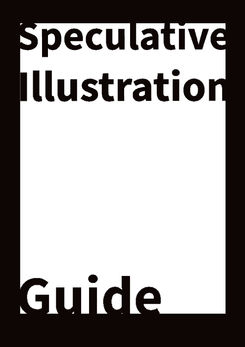Speculative Illustration
2023
In an attempt to unify the various areas of my practice, I dedicated my Master's Project to developing the idea of "speculative illustration".
Speculative fiction is defined as any story that poses a "what if?" question, and includes genres ranging from sci-fi to fantasy and various subgenres. I wanted to expand this idea to illustration, considering the application of visuals to storytelling. My aim was to create a way of making in which text and image are equally balanced, both needing to be "read" to understand the story, neither more important than the other.
Outcome
In exploring the possibilities of speculative illustration, I created three case studies that explored my ideas and possibilities. To expand upon my thinking and development behind the work, I paired these case studies with a guide book which breaks down the thought processes, successes and improvements that could be implemented in this way of storytelling.


Process
I based the case studies on three sci-fi short stories I had written. Working with existing texts had the advantage of a clearly outlined story and vision but the limitation of the story having already been conveyed in a literary manner. Stories do not exist in a distinct form in the imagination, being shaped by the medium chosen to tell them. I therefore had to be careful to avoid redundancies, editing out text where the image communicated that idea. I had to consider the forms of text and image that would be most effective to tell the story, exploring the use of posters, scientific diagrams, character charts, maps, concrete poetry and typography. I should have allowed myself to break the conventions of text and illustration more freely, but I developed my thinking through the creation of these case studies, the idea of speculative illustration only solidifying with experimentation.


Due to this, the process involved a lot of iterations and tests, changes informed by feedback and reading or research on the topics of storytelling, speculation, genre and creation. I tried to create a method for speculative illustration, seeing whether the same "rules" could be applied to multiple stories. For 'High Noon', I established a colour palette and conventions such as dialogue lay out. I tried to follow the same method for 'New Life', with maps, character diagrams and colour palette, but found that I wanted to explore colour further due to the character. I decided that every element had to serve the story, so the visual language and formats had to vary for each story. This was pushed the furthest in 'Haverthorn', with an exploration into a "found document" method of storytelling.





























